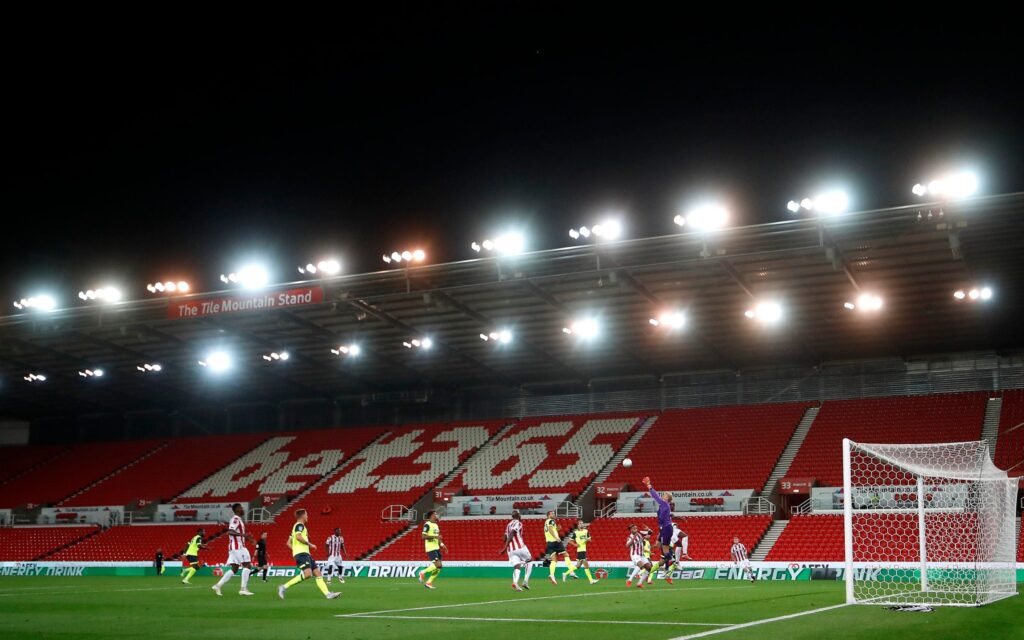Clubs, in my opinion, have been treading water until now. Those in Leagues’ One and Two, as well as The National League – clubs who’s reliance on ticket and match day revenue is enormous – have been waiting for October and knowing that, if they can stay afloat until then, the light at the end of the tunnel will be visible and they can begin to work themselves out of the mess with a socially-distanced and pragmatic approach.

Several Wrongs Do Make A Right Mess Of UK Sport: Part 1

Darren Young
@fanexperienceco
Darren has spent four years working for The Fan Experience Company and is a UEFA Mentor. He is responsible for assessment reports that in 2019/20, went to over 200 clubs in 13 countries.
He has a background in working on customer service excellence projects in the UK and Europe, and an MBA that included studying customer service in the USA .
As a fan, it was very easy to get frustrated when the announcement was must made that the planned October reintroduction of fans into sports (mainly football) stadiums is now on hold, amid an increase in Covid-19 infections. Pilots for September have also been paused.
You could see it coming. The virus is spreading more quickly again – an inevitability given that schools have reopened and other restrictions were relaxed during this month – and the scientific community – while not being able to agree on ‘the science’ have, as they said they would, rode to ‘the rescue’ by recommending something that sounds awfully like a second national lockdown.
But that’s not quite what has happened, rather a lockdown-lite. It’s full of contradictions and ambiguity as usual. Pubs will stay open (although only until 10pm and with table service only) and other restrictions will be either less stringent or even localised. The rule of 6 remains, in England at least, but wedding numbers are cut. The impact on spectator sport, however, is absolute and major; cut off before it really had a chance to get going again.
Because the government made an almighty dog’s breakfast of the initial outbreak in the UK, allowing massive sporting events like the Cheltenham Festival to go ahead, as well as a Liverpool v Atletico Madrid Champions League match where 3,000 people travelled in from the Spanish capital – at the time one of Europe’s hotspots for the virus – they are [over?]compensating now by, as Michael Gove admitted, ‘showing caution’ even though there is less evidence of major transmissions in outdoor venues. The ‘mingling’ of fans outside and on public transport is the major concern as the stadiums themselves pose less of a threat.
Of course, if the games are live on TV, and fans aren’t allowed to go to them, where do they choose to go instead? The pub, for one, or to other people’s houses who have Sky. This conflict hasn’t been lost on people. The government’s attitude to football has been to ‘look within for help’ and ‘ask the Premier League for a loan’ yet pubs and restaurants have not only been open but given huge cash incentives to attract more people inside. Shops and shopping centres are full of people again, following – in most cases – the rules, but in comparison to those venues, most sports venues are outdoor and set up in a way that allows for more effective social distancing with multiple entrances and exits as well as easily controlled seating plans.
Germany reopened its stadiums at the weekend with Bundesliga grounds having up to 9,500 fans inside dependent on which region they were in. It seemed to pass off without problems. In many other countries in Europe, this has been the case for some time. But it hasn’t happened in the UK, where a broad-brush approach is favoured that impacts everyone from Arsenal to Tonbridge Angels. Predictably, an outpouring of media reaction followed Tuesday’s announcement.
Callum Semple, a professor of outbreak medicine at the University of Liverpool, thinks the measures aren’t anywhere near enough; he’d like to see no mixing outside of your household, closing of all sporting and hospitality venues and, presumably, hand sanitiser pumped intravenously into our veins.
The next article on the BBC website was that Whitbread, who own Premier Inn, are cutting 6,000 jobs due to lack of customers. Presumably, Mr Semple is going to help these newly-jobless people buy food for their families over the coming months.
MrDoesn’tAffectMe from Basingstoke then weighs in with the ‘it’s the right decision’ comment that’s based on health and safety, and not unreasonable, but he and Mr Semple ignore the other side of the argument; that some clubs, and even sports will be finished off by this decision. People might be safer but their hobbies (some of them that helped to keep them fit and well, or sane) will no longer be there for them. They might even be people they love and care about.
Tranmere’s vice-chair, Nicola Palios, sees the bigger picture and described it as potentially ‘devastating’. The club had some money set aside for projects that will now go towards keeping the club solvent, so they’ll probably be OK, but she says, the clubs living hand-to-mouth already might not last much longer without some form of rescue package.
Nigel Clibbens, Chief Executive of Carlisle United, calling the news ‘desperate’, was another who pointed out the inconsistency on Twitter, saying the “pause” means that “four people from two families won’t be able to sit outside socially-distanced in our stands” but that “four people from two families can [still] sit around a table inside eating a meal out”.
It’s actually more absurd. Six students, for example now that universities are about to reopen, could sit in a bar then all get up and leave for six separate bars, where they each meet up with another 5 different people. And so on. Yet this is deemed to be an acceptable risk while a carefully-monitored 1,000 fans at an outdoor stadium isn’t.
It’s not perfect and not what they would choose, but it was a way forward. That light might seem a long way off now and for some, might be extinguished forever. This threat has intensified the call for external financial support, with many sporting leaders beginning to lobby the prime minister to act in order to ‘avoid a “lost generation” of sport and activity.’
The Premier League, Football Association and EFL Trust are among one hundred organisations who have written a letter to Boris Johnson in a bid to avert a crisis in professional and grassroots sport, and the immediate response was a promise to find a way to help. One positive, intimated earlier by Gove, was that after the pause, more fans might be able to attend. This is a flicker of hope, as the 1,000 limit in the test events will be of little benefit for clubs in the long-term. As Aston Villa’s Christian Purslow put it, ‘the only thing having 1,000 fans tells us is that football clubs will lose a lot of money.’ So, a solution that could put 30-50% of fans into stadiums in the medium-term is no bad thing.
But that depends on what they mean by medium term?
The sport’s bodies have been told to brace for a tough winter, suggesting that fans might not be back in grounds until the spring. That being the case, without significant financial support, many won’t make it – in football at least – while in other sport’s, where there isn’t as much money, the forecast is even more dire.
For fans, there’s the bleak outlook of – at best – no live football for them, and worst case, no club for them at all.
READ PART 2 OF THIS ARTICLE ON SATURDAY, 26 SEPTEMBER
Our White Paper ‘It’s Just Like Watching Pret’ can be viewed by clicking here
© The Fan Experience Company 2020
